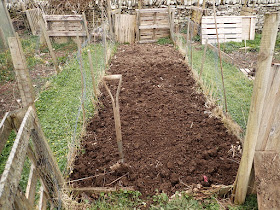I also had a go at identifying some beetles today. The first came out as family Leiodidae; time to give up on that then, 90 odd species mostly done on male genitalia. The second one was a Staphylinidae and I seemed to be going along ok, got to Bledius and then asked for help before attempting to go further. Good job I did, actually Aleocharinae a fiendishly difficult sub family.
5mm long Aleocharinae, Geostiba circellaris was suggested as a guess, I've tried to follow that up but haven't got very far other than geographically it's feasible. I should really just give up, these are very, very difficult.
This is Creophilus maxillosus, a large Staphy.
I'd not seen one of these before and had trouble identifying it as I rescued it from a puddle and the pale hairs couldn't be seen as it was damp. I then kept it in a damp tube.... Only when it dried out did it become obvious what it was but by then I'd already got expert help.
Coltsfoot and Butterbur were found at the same location, a walk with the dog after we'd gone to fetch the bread we'd ordered.
Clouded Drab
Hebrew Character
Moth trapping produced Hebrew Character, Clouded Drab and more Common Quakers.
Barynotus moerens
A nice big, relatively easy to identify weevil. Usually associated with Dog's Mercury which is rare here. I've found this species in the garden before.
On the bird front, the first Bonxie, the first Blackwits, it's bloody cold but perhaps spring is here.












The Creophilus looks amazing. At first glance, I would probably have mistaken it for a solitary wasp or bee. At second glance I would've realised my error, but not been convinced of its essential beetleness due to the uncovered wings. Every day's a school day 😊
ReplyDeleteExactly what I thought when I found it, as a predator of other inverts on poo and carrion you wonder what advantage it obtains from looking like a bee/wasp.
ReplyDelete